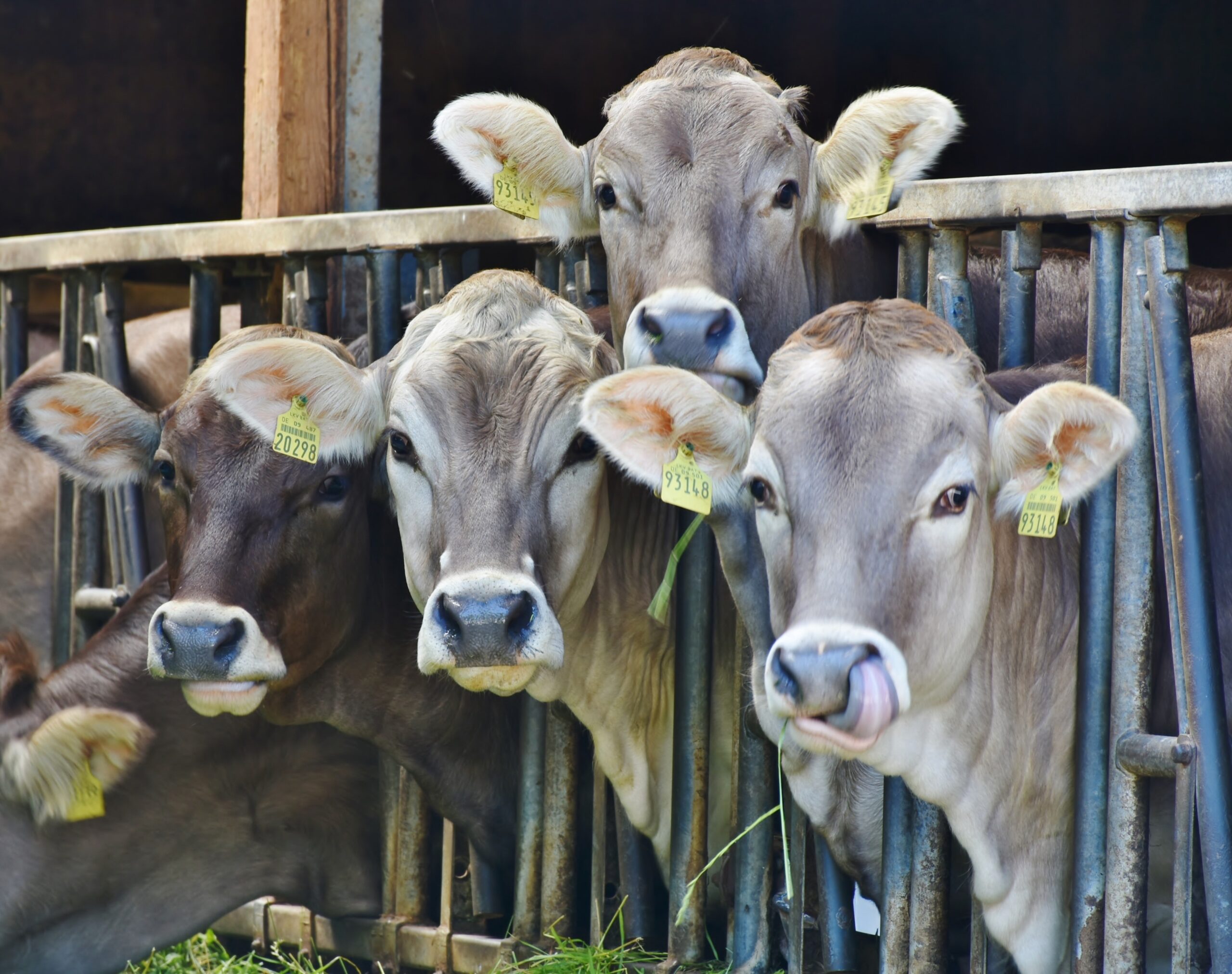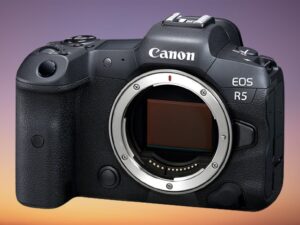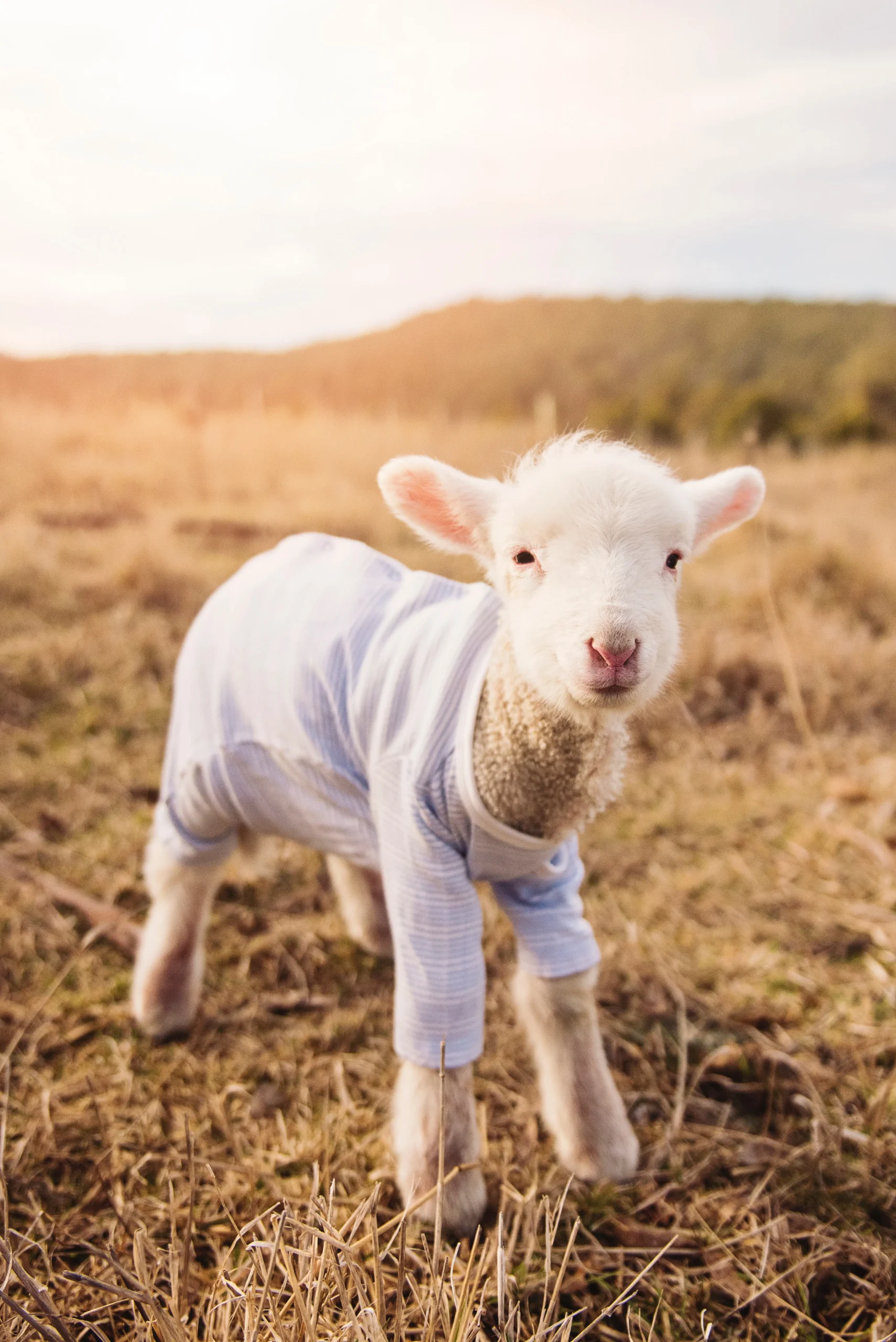Livestock photography captures agricultural animals’ beauty, strength, and individual qualities. This specialist genre of photography honors the crucial function of livestock in agriculture and our connection with these creatures, from magnificent horses and graceful cattle to charming sheep and amusing chicks. Whether in the tranquil expanses of pastures or the regulated conditions of agricultural shows and exhibitions, livestock photographers masterfully portray the various traits, textures, and personalities of animals. Livestock photographers make compelling photos that capture the essence of rural life and the incredible diversity of the animal kingdom with an eye for detail and a deep understanding for the link between humans and animals.

What is the Best Camera for Livestock Photography
There are many excellent cameras available today, and because to advances in technology, it is becoming increasingly affordable to purchase better and better electronic equipment. When individuals are ready to start taking livestock photos, they frequently ask me what sort of camera they should get, so I’ve put together this little article to assist guide your camera buying process and share with you my preferred rig for livestock photos, but first, a word of caution;
We’ve gone over the factors to consider when purchasing a camera, so here are some choices for the best wildlife cameras available right now in 2023.

Canon R5

| Body type | SLR-style mirrorless |
|---|---|
| Max resolution | 8192 x 5464 |
| Effective pixels | 45 megapixels |
| Sensor size | Full frame (36 x 24 mm) |
| Sensor type | CMOS |
| ISO | Yes, 100-51200 (expands to 102400) |
| Lens mount | Canon RF |
| Focal length mult. | 1× |
| Articulated LCD | Fully articulated |
| Screen size | 3.2″ |
| Screen dots | 2,100,000 |
| Max shutter speed | 1/8000 sec |
| Format | MPEG-4, H.264, H.265 |
| Storage types | CFexpress and SD (UHS-II) slots |
| USB | USB 3.2 Gen 2 (10 GBit/sec) |
| Weight (inc. batteries) | 738 g (1.63 lb / 26.03 oz) |
| Dimensions | 138 x 98 x 88 mm (5.43 x 3.84 x 3.46″) |
| GPS | None |
The Canon R5 is a feature-packed mirrorless camera designed for professional photographers and videographers. Here are some of its notable features:
1. High-resolution sensor: The R5 boasts a full-frame 45-megapixel CMOS sensor, delivering exceptional image quality with impressive detail, dynamic range, and low noise performance.
2. Advanced autofocus system: With an autofocus system that features 5,940 selectable AF points and intelligent subject tracking, the R5 provides fast and precise focusing, even in challenging shooting conditions.
3. 8K video capability: The R5 is capable of recording 8K video, allowing videographers to capture incredibly detailed footage. It also supports various video formats, including RAW, for maximum flexibility in post-processing.
4. In-body image stabilization (IBIS): The camera incorporates a 5-axis in-body image stabilization system, which works in conjunction with lens-based stabilization, providing incredibly smooth footage and reducing camera shake during handheld photography.
5. Dual Pixel CMOS AF II: The R5 features Canon’s Dual Pixel CMOS AF II technology, offering fast and accurate autofocus for both still images and video. It provides eye detection autofocus and animal detection autofocus, enhancing the precision of subject tracking.
6. High-speed continuous shooting: With a fast continuous shooting speed of up to 20 frames per second (fps) with the electronic shutter or 12 fps with the mechanical shutter, the R5 allows you to capture fast-paced action and fleeting moments.
7. Excellent low-light performance: The R5 has an impressive ISO range of 100-51,200 (expandable to 102,400), enabling you to shoot in challenging lighting conditions while maintaining image quality.
8. Dual memory card slots: The camera is equipped with dual memory card slots, supporting one CFexpress card and one SD UHS-II card, providing ample storage space and the ability to back up your files.
9. Intuitive controls and ergonomics: The R5 features a comfortable grip, customizable controls, an articulating touchscreen, and a high-resolution electronic viewfinder, ensuring a user-friendly shooting experience.
10. Built-in connectivity: The camera offers built-in Wi-Fi and Bluetooth for seamless image transfer and remote camera control, allowing you to easily share your photos and videos with your mobile devices or control the camera remotely.
The Canon R5 combines impressive still photography capabilities with powerful video features, making it a versatile and reliable tool for professionals in various fields of photography and videography.

Nikon Z 9

| Body type | SLR-style mirrorless |
|---|---|
| Max resolution | 8256 x 5504 |
| Effective pixels | 46 megapixels |
| Sensor size | Full frame (35.9 x 23.9 mm) |
| Sensor type | Stacked CMOS |
| Lens mount | Nikon Z |
| Articulated LCD | Tilting |
| Screen size | 3.2″ |
| Screen dots | 2,088,960 |
| Max shutter speed | 1/32000 sec |
| Format | H.264, H.265 |
| USB | USB 3.2 Gen 1 (5 GBit/sec) |
| Weight (inc. batteries) | 1340 g (2.95 lb / 47.27 oz) |
| Dimensions | 149 x 150 x 91 mm (5.87 x 5.91 x 3.58″) |
| GPS | Built-in |
The Nikon Z9 is one of the most powerful cameras on the market, capable of shooting at up to 30 frames per second in JPEG or 20 with Raw capture, and recording 8K/30 video with the promise of 12-bit Raw 8K/60 capture in a future firmware update. It’s also one of the few cameras on the market that doesn’t have a mechanical shutter, a design decision made possible by the new sensor’s exceptionally quick read-out speed.
The Nikon Z9 is the company’s first mirrorless camera to include 3D Tracking AF, which can be paired with the camera’s machine-learning educated subject identification technology, it could be Best Camera for Livestock Photography. The autofocus mechanism has been programmed to distinguish three categories of subjects: people, animals, and vehicles. In ‘Auto’ mode, the Z9 analyzes the scene to detect subjects without your intervention.
The Z9 has the dual-grip form factor of a D6-level DSLR but has a little more angular appearance than the other Z-series cameras whic. When fully equipped with cards and batteries, the Z9 is around 8% lighter and 20% smaller in volume than Nikon’s current D6. It boasts a 2.1M-dot touchscreen that pulls out and hinges vertically and horizontally for portrait or landscape oriented shooting.
READ ALSO: How to Start a Photography Business with no Experience – Detail Guide 2023
Nikon D850

| Body type | Mid-size SLR |
|---|---|
| Max resolution | 8256 x 5504 |
| Effective pixels | 45 megapixels |
| Sensor size | Full frame (35.9 x 23.9 mm) |
| Sensor type | BSI-CMOS |
| ISO | Auto, 64-25600 (expands to 32-102400) |
| Lens mount | Nikon F |
| Focal length mult. | 1× |
| Articulated LCD | Tilting |
| Screen size | 3.2″ |
| Screen dots | 2,359,000 |
| Max shutter speed | 1/8000 sec |
| Format | MPEG-4 |
| Storage types | SD/SDHC/SDXC (UHS-II supported) + XQD |
| USB | USB 3.0 (5 GBit/sec) |
| Weight (inc. batteries) | 1005 g (2.22 lb / 35.45 oz) |
| Dimensions | 146 x 124 x 79 mm (5.75 x 4.88 x 3.11″) |
| GPS | None |
Nikon’s D850 is the company’s next-generation high-resolution full-frame DSLR. It has a 45.7 Megapixel BSI CMOS sensor with no optical low-pass filter and an Expeed 5 image processor, both of which enable rapid burst rates and 4K video shooting. The D850 features an ISO range of 64-25,000, which can be expanded to 32-120,400, and a burst rate of 7 frames per second with continuous AF and 9 frames per second with the optional battery grip and EN-EL18a/b battery. The D850 has the same AF system as the top Nikon D5, which means 153 points, 99 of which are cross-type, and the company’s effective 3D Tracking.
The D850 is designed to be lightweight for its class, with a revised grip comparable to the D750. The body is dust and moisture resistant, and the controls are lit for shooting at night. It boasts Nikon’s ‘widest and brightest’ viewfinder, as well as a tilting 3.2″ touchscreen display with 2.4 million dots. It includes two memory card slots that accept both UHS-II and XQD media. The battery life is rated at over 1800 shots out of the box and 5100 shots with the optional grip and EN-EL18a/b battery.
UHD 4K video capture, slow motion and 4K/8K time-lapse models, focus peaking, and other video features are available. The D850 includes built-in Wi-Fi, NFC, and Bluetooth, dubbed ‘SnapBridge’ by the firm.
Canon 7D Mark II

| Body type | Mid-size SLR |
|---|---|
| Max resolution | 5472 x 3648 |
| Effective pixels | 20 megapixels |
| Sensor size | APS-C (22.4 x 15 mm) |
| Sensor type | CMOS |
| ISO | Auto, ISO 100-16000 (expandable to 51200) |
| Lens mount | Canon EF/EF-S |
| Focal length mult. | 1.6× |
| Articulated LCD | No |
| Screen size | 3″ |
| Screen dots | 1,040,000 |
| Max shutter speed | 1/8000 sec |
| Format | MPEG-4 |
| Storage types | CompactFlash + SD/SDHC/SDXC |
| USB | USB 3.0 (5 GBit/sec) |
| Weight (inc. batteries) | 910 g (2.01 lb / 32.10 oz) |
| Dimensions | 149 x 112 x 78 mm (5.87 x 4.41 x 3.07″) |
| GPS | Built-in |
The Canon EOS 7D Mark II is the long-awaited successor to the original 7D, which was released in 2009. It comes with a 20.2MP APS-C CMOS sensor as well as two DIGIC 6 image processors. It boasts a new 65-point autofocus system that is all cross-type, as well as an updated version of Canon’s Dual Pixel CMOS AF system that offers continuous phase detect focusing during video recording. It offers advanced subject-tracking controls akin to the EOS 5D Mark III and 1D X. The 7D Mark II can shoot continuously at up to 10 frames per second.
A 3″ LCD with 1.04M dots, a wide optical viewfinder with 100% coverage and an LCD overlay that displays shooting information, and twin memory card ports for CompactFlash and SD/SDHC/SDXC media are also included. In terms of video, the 7D II can record Full HD footage at a number of frame rates, including 59.94 fps, using a variety of file formats (MOV or MP4) and compression methods (IBP, ALL-I, Light IPB). The camera contains a microphone and headphone jack, as well as a USB 3.0 port. While the 7D features GPS, it does not have Wi-Fi.
Sony a9 II

| Body type | SLR-style mirrorless |
|---|---|
| Max resolution | 6000 x 4000 |
| Effective pixels | 24 megapixels |
| Sensor size | Full frame (35.6 x 23.8 mm) |
| Sensor type | Stacked CMOS |
| ISO | Auto, ISO 100-51200 (expands to 50-204800) |
| Lens mount | Sony E |
| Focal length mult. | 1× |
| Articulated LCD | Tilting |
| Screen size | 3″ |
| Screen dots | 1,440,000 |
| Max shutter speed | 1/8000 sec |
| Format | MPEG-4, AVCHD, H.264 |
| Storage types | Dual SD/SDHC/SDXC slots (UHS-II compatible) |
| USB | USB 3.2 Gen 1 (5 GBit/sec) |
| Weight (inc. batteries) | 678 g (1.49 lb / 23.92 oz) |
| Dimensions | 129 x 96 x 76 mm (5.08 x 3.78 x 2.99″) |
| GPS | None |
Sony’s Alpha a9 II is a sports-oriented full-frame mirrorless camera. It has a 24MP stacked CMOS sensor that allows for 20 fps burst shooting without the ‘blackout’ seen on typical DSLRs (it can shoot at 10 fps with its mechanical shutter). It contains a 693-point phase-detect sensor that covers 93% of the image area and Sony’s newest Real-Time Tracking technology. When completely enlarged, the camera offers an ISO range of 50-204,800 and can save 14-bit uncompressed Raws. It can also record UHD 4K footage that has been oversampled.
The revised magnesium alloy body is weather-sealed, includes onboard 5-axis image stabilization, and two dials plus a joystick for selecting an AF point, similar to the a7R IV. The big EVF boasts 3.7 million dots and the touch-enabled tilting 3″ LCD. The a9 has two SD card slots (both of which support UHS-II media), as well as Gigabit Ethernet and USB 3.2 connections that let users to upload files over FTP (even in the background). Sony’s Wi-Fi technology has been modified to handle the 5GHz frequency. The camera can save up to seven different sets of camera and FTP settings, allowing many photographers to use the same body in different ways.
IF YOU NEED BEST LENS FOR YOUR CAMERA YOU CAN VISIT BESTOFLENS.COM
FAQ about Best Camera for Livestock Photography
What Style of Camera Should I Buy? You’re ready to start photographing cattle if you have a DSLR body with interchangeable lenses. Even the most basic cameras have enough power to accomplish the job. As your talents improve, you’ll want to upgrade to a higher-end model.
Can I buy used? Most people will warn you not to buy old equipment, which I understand, but I strongly advise people to consider purchasing used cameras. Because most people don’t use cameras professionally, there are loads of nice used cameras available that haven’t been shot much, and they are offered at substantially discounted pricing – because people don’t like buying old equipment. It’s similar to purchasing a low-mileage automobile. When retailers like B&H Photo get used equipment, they assess it so you can understand how excellent of shape they believe it is in before you buy. The number of shutter actuations on a camera determines its mileage. It is the number of photographs taken by the camera. Most entry-level DSLRs are rated for 100,000 shutter actuations, according to the manufacturer, and I’ve never had a camera that needed repair with fewer than that. In fact, most of them lasted two or three times longer before requiring any kind of maintenance.
Full Frame or Crop Sensor? When it comes to the size of the digital sensor inside the camera body, the majority of the DSLR cameras on your list will fall into one of two categories. If you can afford it, Full Frame sensors are the way to go since they allow you to use your lens’ maximum effective aperture more efficiently, allowing you to capture photographs with that gorgeous hazy background look.
Crop sensors provide two significant advantages. For starters, they are far less expensive. Second, they will allow you to extend the reach of your zoom lenses. The identical lens reaches around 1.7x farther on a crop sensor body than it does on a full frame sensor, and trust me when I say it will be an adjustment if you find yourself making the transition.
Another reason to buy used is that when photographing animals, cameras get dirty, are dropped while leaping a gate, or have close brushes with bovines. Nothing breaks your heart more than seeing your $5,000 setup tumble to the ground.
What rig do you use? My Nikon D610 has been my go-to camera for cattle photography. I’ve owned a few of them and find them to be a great value, with a fantastic image size with enough detail to make amazing edits but a reasonable RAW file size, and, of course, all the benefits of a full frame sensor.
I’d love to answer any questions in the comments below, or you can join the conversation on our social channels!

1 thought on “Best Camera for Livestock Photography”